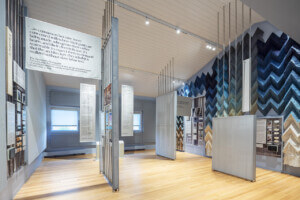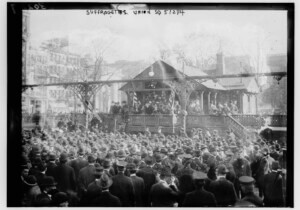Good morning and welcome back to another news roundup chock-a-block full of today’s happenings.
Here’s what you need to know:
The National Building Museum will launch its Climate ABC series on November 16
On November 16, the National Building Museum in Washington, D.C., will launch the start of its new Climate ABC (Action/Building/Community) initiative, a series intended to address climate solutions at each of those three aforementioned scales. The inaugural public program, Reinventing Cities, will kick off on the 16th in conjunction with C40 Cities, a group of 40 cities from across the planet united to combat climate change. The program will present examples of net-zero developments as well as a discussion on how to cut embodied carbon in the built environment.
Other topics Climate ABC will cover through lectures and events are urban regeneration, climate mitigation, and how communities and local groups can advocate for a more sustainable future.
Co-working spaces are mushrooming up throughout the suburbs as workers look to cut commutes
What will the future of work be like post-pandemic? No one really knows, but the close contact and commuting often required by traditional co-working spaces have crippled them over the last two years. Now, companies are expanding their reach outward from densely populated cities to the surrounding suburbs where their former guests are still likely working from home. Nowhere is this more prevalent than the New York metropolitan area, where co-working spaces are reportedly filling up vacant retail slots in Westchester and New Jersey enclaves.
H/t to the New York Times
With strikes and walkouts on the rise, labor unions see an opportunity for leverage
Fed-up employees are striking or quitting en masse across America, and construction unions are getting in on the action as well. Although nothing has been officially announced, Construction Dive anticipates that with vaccine mandates, rising material costs and dampened availabilities, and the strength of the construction market, contractor groups are in a good position—but that striking could possibly exacerbate the shift to non-union construction. They’re quick to point out that construction unions only make up about 30 percent of the commercial construction workforce, and striking could shrink that percentage even more if developers push back.
H/t to Construction Dive
Lake Michigan is fluctuating wildly due to climate change, putting Chicago at greater risk than thought
The last five years have been Chicago’s wettest on record, and extreme rises and falls in the levels of Lake Michigan could be putting the city’s flood protection system at risk of failure. In 2020, for instance, Chicago was unable to pump water from behind its flood levees back into the lake after the water level rose over where it would have been pumped out. The EPA and Army Corps of Engineers are investigating further protective measures for the warmer years to come, but the only real solution may be limiting carbon emissions.
H/t to CNBC
10 UNESCO forests are now putting out more carbon than they sequester
Speaking of, a new survey by the United Nations has revealed that 10 of the 257 forests designated as UNESCO World Heritage sites including the Grand Canyon National Park and Yosemite National Park are now emitting more carbon dioxide than they sequester. The shift is mainly due to wildfires, logging, and deforestation for agricultural land.
H/t to the Seattle Times
LiDAR uncovers 500 Mesoamerican archeological sites across Mexico
Nearly 500 precolonial settlements spanning 30,000 square miles across Mexico have been uncovered thanks to ground-penetrating LiDAR (Light Detection and Ranging) technology. With an aerial camera, a team of archeologists was able to detect the Olmec and Maya sites dating from 1400 BCE to 1000 CE with sophisticated, rectilinear forms. Only 20 percent thus far have even been surveyed from the ground, and the next step is for the team to actually visit and verify that their measurements were correct.
H/t to Gizmodo











